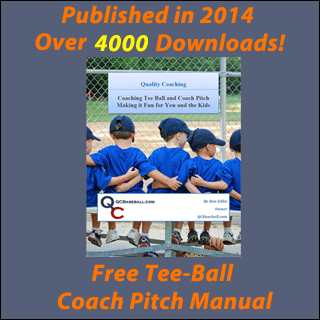Drill: Pitching Accuracy Game
Purpose:
This game helps your pitcher work on accuracy and understanding when he starts aiming the ball. The second purpose of this game is for your catcher and pitcher to work on communication.
Equipment:
Catcher in full gear; Pitcher; Mound; 1 baseball
Setup:
A bullpen area where a pitcher can throw. Pitcher will work on fastball and/or changeup only.
Execution:
Pitcher will warm up properly. After warm-up and a number of pitches on the mound, the game will begin.
Catcher has the role of catcher and umpire. Catcher will call a pitch and location. This should be done with signs not verbally. The catcher should set up and give a good target in the location he wants the ball. Have the catcher imagine a ring around his glove with a certain diameter. This will vary in size depending on age and ability. You may give a young pitcher 6 inches on all sides and a high school pitcher 1 inch.
The pitcher will throw the pitch. If the catcher can catch the pitch within the imaginary circle he has set up, the pitch is a strike. If not the pitch is a ball.
Scoring: A walk is a -1 and a strikeout is +1. Catcher and pitcher keep a running total. Record the + or - score at the end of the game.
The catcher should also watch for the pitcher aiming the ball. The easiest way to determine this is be aware of the speed of the pitch. As the pitcher finishes his warm-up the catcher is aware of the speed of the fastball. If during the game the catcher notices a fastball coming in slower and thinks the pitcher is aiming it vs. being tired, he will call it a ball whether it was within the circle or not. In this case the catcher should stand up and tell the pitcher that he is aiming the ball. Discussion and disagreement are normal, but just as with an umpire, the call stands. This will give the catcher a chance to develop some leadership and communication skills and the pitcher some feedback.
The catcher should gauge whether the game is too easy or difficult and adjust the diameter if necessary.
You may want to have a parent or another pitcher counting pitches and put a limit for the game. The one thing you don't want to have happen is a tired pitcher trying to throw the ball too hard in order to keep the catcher from calling a ball based on aiming.
Most Recent Blog Posts
Working With Players on Focusing on the Correct Part of the Baseball when Hitting (October 15 2016)
Getting More Accurate Throws From Your Team (April 5 2016)
Thanks Don! Your website has been a tremendous help. I’m a new coach and I’m getting a lot of good information from it.
Best regards,
- Tom D.







